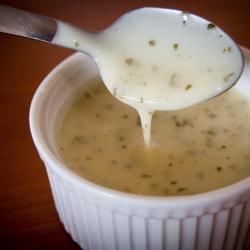How to Make Comfort Food Healthier Without Losing Taste
Comfort food has a special place in our hearts, often reminding us of childhood memories, family gatherings, or simply the cozy feeling of home. Traditionally rich and hearty, these dishes can often be laden with calories, unhealthy fats, and sugars. However, enjoying your favorite comfort foods doesn't have to be synonymous with abandoning your health goals. With a few smart swaps and creative cooking techniques, you can make your beloved comfort dishes healthier while retaining their delicious flavors.
- Embrace Whole Grains
Trade refined grains like white rice, pasta, and bread for their whole-grain counterparts. Brown rice, quinoa, whole-wheat pasta, and whole-grain bread are not only more nutritious but also add a robust flavor and texture to dishes. For instance, swap white rice for quinoa in a casserole or use whole-wheat pastry flour when making pie crust.
- Opt for Lean Proteins
Traditional comfort foods often rely on fatty cuts of meat. Consider alternatives that provide lean protein with lower saturated fat content. For example, replace ground beef with ground turkey or chicken in meatloaf, and explore plant-based options like lentils or chickpeas in stews and curries. Not only will this reduce the calorie content, but it will also add a diverse array of nutrients to your meal.
- Load Up on Vegetables
Vegetables can enhance the flavor profile of nearly any dish while significantly boosting its nutritional value. Add extra veggies to sauces, stews, and casseroles. Sneak shredded carrots or zucchini into meatloaves or add a plethora of colorful vegetables to your favorite pasta dishes. Roasting or sautéing veggies before adding them can intensify their flavors, making your dish even more satisfying.
- Experiment with Cooking Methods
Traditional comfort foods often involve frying, resulting in higher fat content. Consider healthier cooking methods such as baking, grilling, steaming, or slow cooking. Instead of frying chicken, try baking it with a crispy whole-grain coating. This will not only reduce calories but also maintain that appealing crunch.
- Use Healthier Fats
Replace unhealthy fats with heart-friendly options. Use olive oil, avocado oil, or coconut oil in place of butter for sautéing vegetables or making dressings. Avocado or Greek yogurt can be creamy substitutes in dishes that require mayonnaise or sour cream, providing richness with fewer calories.
- Balance Flavors with Herbs and Spices
Avoid the excessive use of salt and sugar by experimenting with herbs and spices to enhance the flavors of your dish. Fresh herbs like basil, cilantro, and thyme can add vibrant flavors, while spices such as cumin, paprika, and cinnamon can provide depth and warmth. A squeeze of lemon or a dash of vinegar can help bring out natural flavors without added salt.
- Portion Control
Sometimes, a dish's healthiness comes down to moderation. Enjoy your favorite comfort foods but be mindful of your portion sizes. Using smaller plates or bowls can help control servings, allowing you to savor the comfort without overindulgence.
Conclusion
Comfort food doesn’t have to be sacrificed on the altar of health. By making a few thoughtful changes to ingredients and cooking methods, you can enjoy these heartwarming dishes with less guilt and more nutrients. The key lies in balancing indulgence with nutrition, ensuring that your comfort food not only feeds your soul but also supports your well-being. So, experiment with these tips, and reinvent your culinary classics into wholesome, flavor-packed delights.






















